Read about the renowned violinist and teacher who inspired (and frightened) scores of players
Discover more Featured Stories like this in The Strad Playing Hub
Today is the birthday of legendary violinist and teacher Jascha Heifetz. Born in 1901, he was a child prodigy who started lessons at the age of four with Elias Malkin, going on to pursue further studies at St Petersburg Conservatory with Ovanes Nalbandian and Leopold Auer.
At the age of 12, Heifetz met renowned violinist Fritz Kreisler (who also shared the same date of birth) at a private house party in Berlin. After hearing the young violinist play the Mendelssohn Violin Concerto, Kreisler was reported to have said, ’We may as well break our fiddles across our knees.’
Heifetz enjoyed a long and illustrious career as a performer, recording artist and teacher. Delve into The Strad archives to find out more about the man, as well as accounts from colleagues and students:
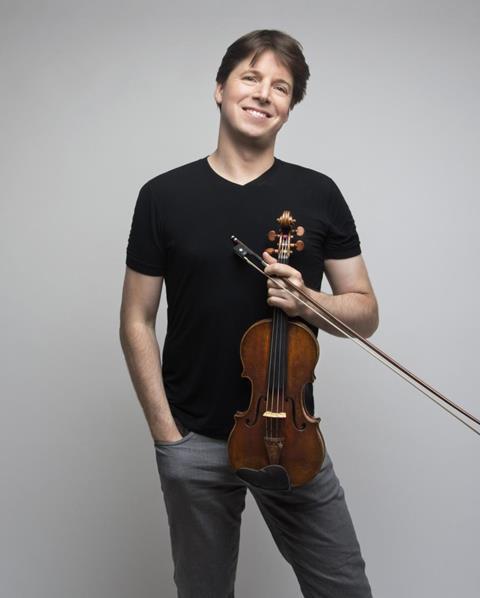
’Whenever I put on a Heifetz CD it sets the standard for me’ - Joshua Bell
As he was for every violinist of that time, Jascha Heifetz was one of Gingold’s idols, and he became my idol too. I don’t listen to much violin playing any more in my spare time, but whenever I put on a Heifetz CD it sets the standard for me. You always have this bar in your head that you strive for in playing the instrument.
Whenever I listen to Heifetz I realise that set it too low. Of course I can never get there, but by listening to Heifetz it always makes me set the bar higher. I always play better after I’ve just listened to him. My technique improves just by listening to him play. So much of it is about the expectations you put on yourself. You can always do better than you think.
Heifetz had such intensity. I’ve listened to him playing Bruch’s Scottish Fantasy a few times recently and there just isn’t a recording that comes close. He defined that piece. It’s almost a curse: it’s hard not to want to mimic him, because he captured it. He was like a tornado. He didn’t radiate a lot of warmth in his persona, the way he looked, but his playing is not cold at all.
Read: Josef Gingold and Jascha Heifetz are my violin heroes, says Joshua Bell
Listen: The Strad Podcast Episode #10: Joshua Bell on Piazzolla
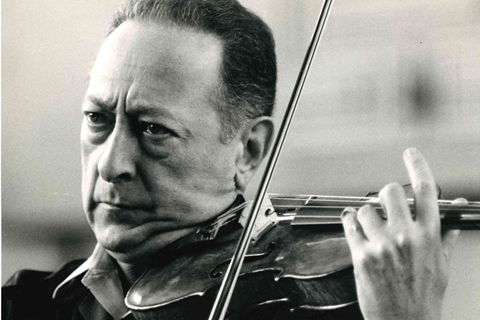
The darker side of Heifetz the autocratic teacher
Heifetz was obsessive about appearance, as he made clear to [former student] GwenThompson-Robinow from the outset. ‘The first time I played to him he said, “From the neck up and the knees down, you’re fine.” At the time, I was around 22 and weighed 220 pounds. He asked me, “Do you want people to feel sorry for you when you walk on stage? Because people listen with their eyes.”
I was standing there sweating because it was hot, we were in California and he didn’t like the air conditioning on and he didn’t like us to wear sandals. We also couldn’t wear anything shiny, because it might distract the audience. He was fanatical.’

’Most of all, Heifetz inspired us continually to seek excellence’ - Sherry Kloss
Vibrato, tone & intonation: He told us that there are five different kinds of vibrato. We were expected to create at least three of them, and he taught us to work on the same passage using different areas of the fingertip to discover and develop the best places to create different types of sound – brilliant, sensuous or sweet, for example. Heifetz advised us ‘not to copy anyone’, and we spent much time on the discovery of tone production. Intonation was not addressed in itself; our teacher believed that, ‘If they don’t hear themselves, it doesn’t do much good for me to tell them.’
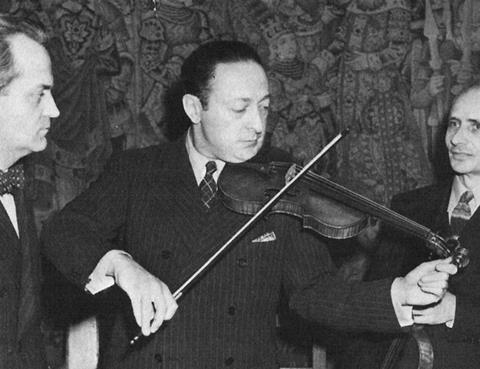
’He spoke passionately about the potential for American-made violins’ - Jascha Heifetz’s lutherie competition
On 5 March 1940, Jascha Heifetz announced a year-long competition to find the best violins being made in the United States at the time. In conjunction with Wurlitzer’s in New York, Heifetz sought to prove that ‘entirely satisfactory playing could be achieved on a violin made in this country’.
Heifetz’s profile as a star violinist garnered national attention for his competition, and the violinist gave numerous interviews, during which he spoke passionately about the potential for American-made violins.
The tense political realities of that era, and a growing sense of nationalism, ensured a healthy public appetite for anything ‘Made in America’. A poem published in a New York newspaper at this time joined together the themes of nationalism, violin making, and mass production:
Give a cheer for the American fiddle –
The finest that money can buy;
It’s good at both ends and the middle:
It’s American-made – that’s why.
With the call for all-out production,
Our makers of fiddles will need
No warning to cut out obstruction
And catgut assemblies to speed.
Let saboteurs scheme on the q.t.
To see US fiddles go bust –
All hands will take care – as a duty –
That our fiddles are fiddles to trust
This country, in violin making,
Can set a pace no land can match;
Whatever defence part they’re taking –
Our violins won’t start from scratch.
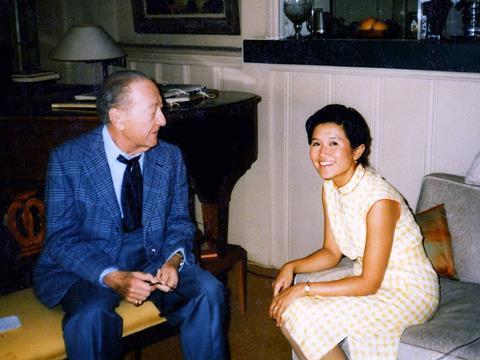
‘Don’t write it down. Remember it!’ - Inside Jascha Heifetz’s teaching studio
I ask Agus about Heifetz’s teaching method. ‘Well, if he had a method, it was probably the one he learnt from Auer,’ she says. ‘We all tend to emulate the teachers who made the biggest impact on us.’
She lists a number of comparisons and contrasts between the Auer and Heifetz methods:
- ‘Neither focused on technical matters, choosing instead to work on deepening their students’ interpretative skills and general musical understanding – although both were sticklers for technical accuracy as required for proper service to the music’
- ‘Auer didn’t demonstrate much whereas Heifetz demonstrated a great deal. The only downfall of these demonstrations was that the playing was so magical it was almost always impossible for the poor student to focus on whatever point was being demonstrated!’
- ‘Both Auer and Heifetz accepted no excuse for lack of discipline or for sloppiness. They both expected intelligent work habits and great attention to detail. The weekly lesson preparation was intentionally as gruelling as for a full recital performance’
- ‘While both pushed their students to their limits, they each also remained devoted to their students’ needs.’ (At this point we speak off the record of numerous acts of exceptional generosity on Heifetz’s part – almost none of which are public knowledge, at his insistence)
- ‘Both expected every violin student to be able to play the piano and the viola – no exceptions’
Heifetz Cadenzas: Beethoven Violin Concerto
Read: Heifetz Cadenzas: Beethoven Violin Concerto - with sheet music
Read: Great string players of the past: violinist Fritz Kreisler
The number one source for playing and teaching books, guides, CDs, calendars and back issues of the magazine.
In The Best of Technique you’ll discover the top playing tips of the world’s leading string players and teachers. It’s packed full of exercises for students, plus examples from the standard repertoire to show you how to integrate the technique into your playing.
The Strad’s Masterclass series brings together the finest string players with some of the greatest string works ever written. Always one of our most popular sections, Masterclass has been an invaluable aid to aspiring soloists, chamber musicians and string teachers since the 1990s.
The Canada Council of the Arts’ Musical Instrument Bank is 40 years old in 2025. This year’s calendar celebrates some its treasures, including four instruments by Antonio Stradivari and priceless works by Montagnana, Gagliano, Pressenda and David Tecchler.

























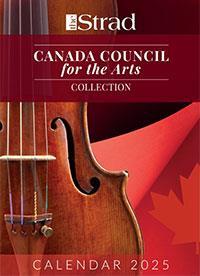


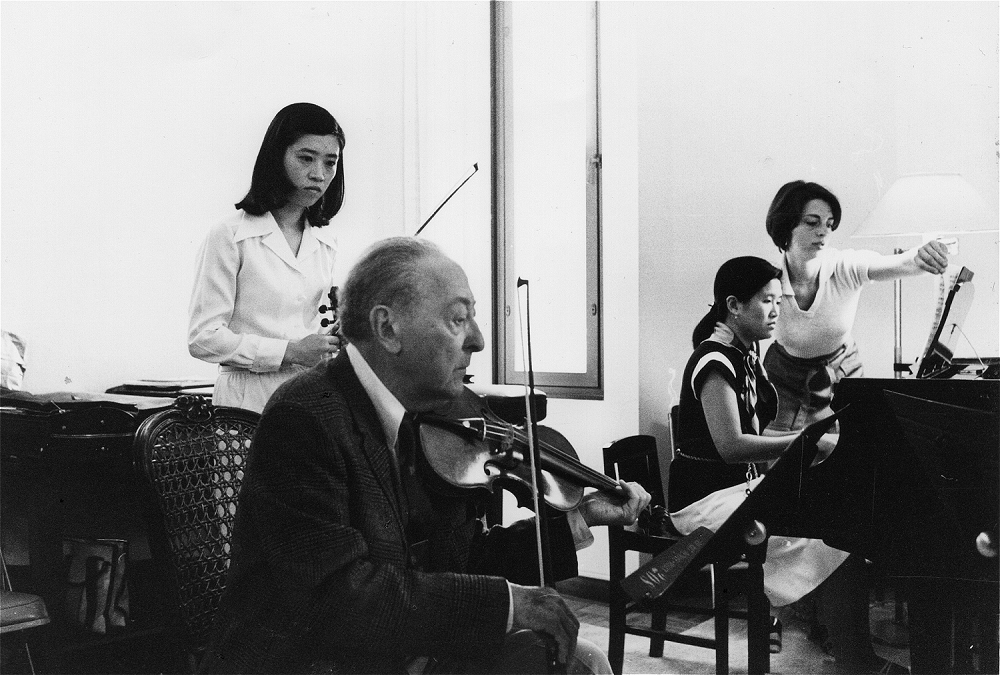









No comments yet